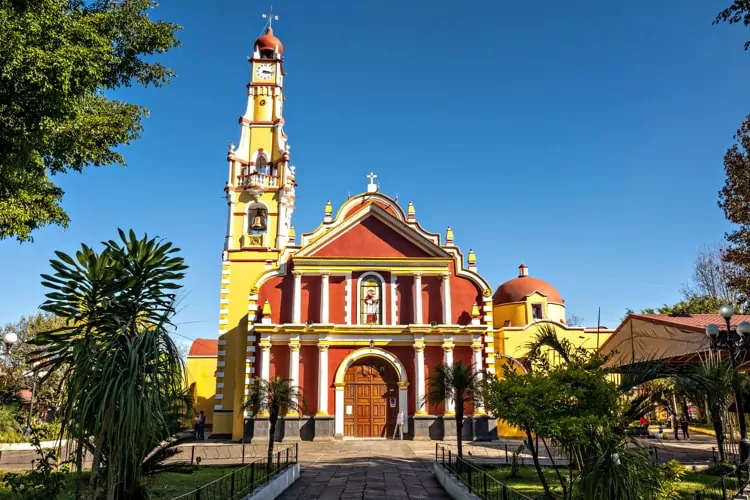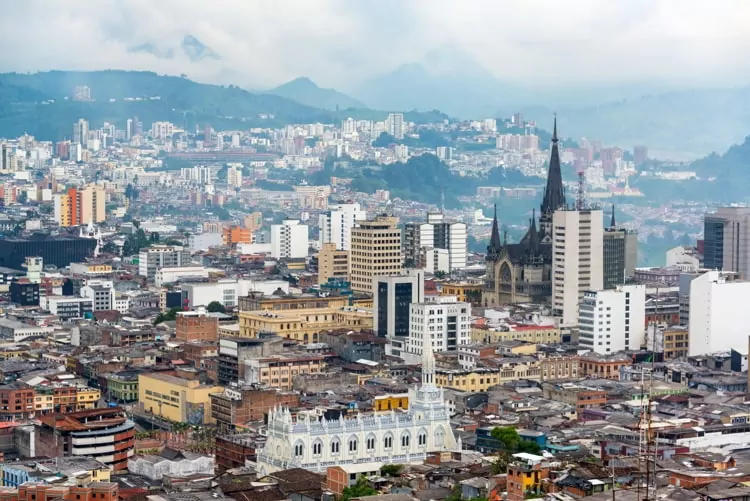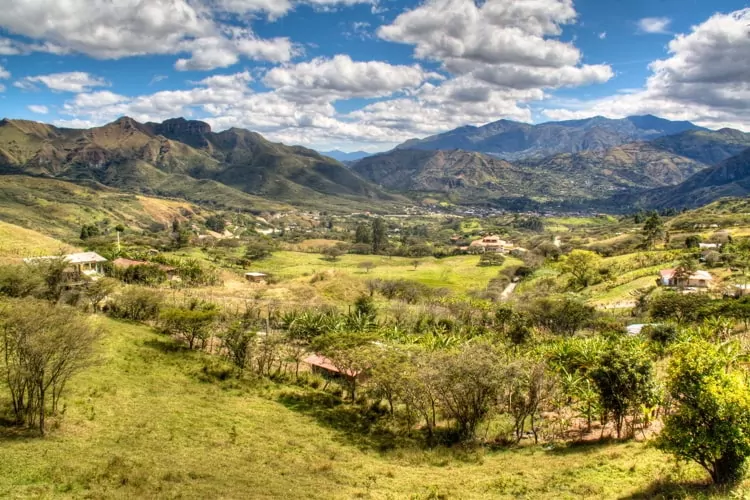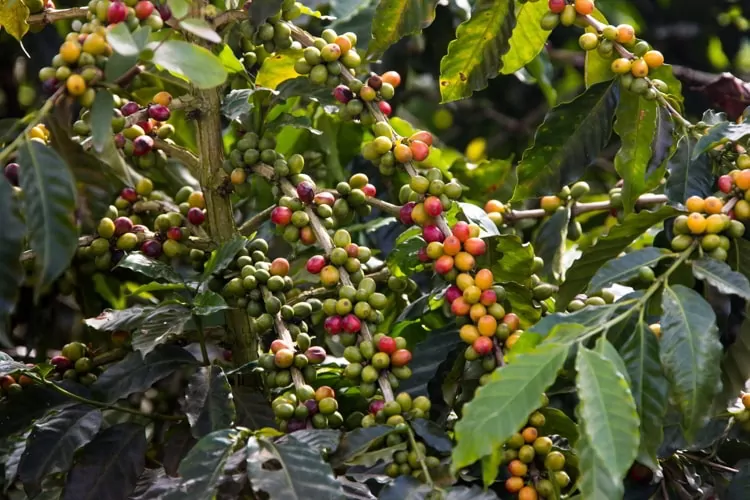Back in the year 2000, on one of my final retire-overseas exploratory trips, I looked at a small, rustic home beside a rushing river in Mexico. Giant trees grew along the riverside, shading both the house and most of the large property.
Among the trees, I found a plant that I didn’t recognize… it turned out to be a coffee plant, lush with ripe berries. I plucked a few berries from the tree and thought about how great it would be to grow my own coffee right on my property. I still have the berries today as a souvenir.
We didn’t buy that house just south of Xalapa, but I never lost sight of the dream of one day having my own coffee crop.
If you’d love to grow, sun-dry, roast, and brew your own coffee—from berry to cup—here are three options that are perfect for doing so…
Coatepec: Enjoy A Great Climate In The Coffee Capital Of Mexico

Coatepec is a small city of about 60,000 people, located a few miles south of Xalapa, the capital of the eastern state of Veracruz. Coatepec sits at an ideal 4,000 feet (1,220 meters) above sea level, which is not only perfect for coffee but also assures moderate weather year-round.
Coatepec was named a “Pueblo Mágico” in 2006… a title bestowed by Mexico’s tourism department as part of their program for identifying towns that offer a “magical” experience due to their natural beauty, cultural riches, or historical significance. It’s an attractive and charming colonial town.
Often nicknamed the coffee capital of Mexico, Coatepec offers good weather all year. The coldest month is January, with lows of 48℉, while the warmest month is May, with highs of 86°F. The nights are always cool, and even in May, overnight temperatures will remain in the 50℉ range. These temperatures are not only pleasurable for everyday life but also optimum for growing successful coffee crops.
Embarking on that coffee farm dream couldn’t be more straightforward in Coatepec. You will find listings for farms with already established crops of coffee, sugar cane, corn, avocados, or numerous different fruits, complete with a farmhouse, sheds for drying coffee, and all the equipment you will need. All that’s required is signing some papers and moving in.
These sites can go for US$150,000 for a small farm of roughly 2 acres. If you are after a bigger plot, prices will increase with size. Another option is to invest in a bare piece of land and build your own coffee farm. This will be considerably cheaper, but a lot more work.
Manizales, Colombia: Sophisticated City Life In The Coffee Triangle

A cornerstone of Colombia’s famous Coffee Triangle, Manizales is a sophisticated city, serving as the capital of the department of Caldas.
Some expats refer to Manizales as the San Francisco of Colombia, owing to the city’s hilly terrain. It even has a few cable car circuits, which are part of the public transit system. Take the cable car from the main bus station to the city center, and save yourself an arduous 2-kilometer walk.
Manizales is a prominent university town, with four different universities owing to a large student population. This brings the city the sophistication and energy often found in university environments.
Perched at an elevation of around 2,150 meters, the average high temperature in Manizales is just over 70°F. Lows average slightly above 54°F. Manizales enjoys springlike temperatures year-round thanks to its high elevation. These weather conditions and geographical factors play a crucial role in producing some of the world’s best coffee.
This “Coffee Triangle” produces the majority of Colombia’s coffee, yet coffee farms around Manizales are surprisingly cheap. Farms of up to 5 acres, a ten-minute drive outside the city, can go for as little as US$50,000. This is seriously good value, and gives you the potential to cash in on some of the world’s best coffee crops.
Vilcabamba, Ecuador: Pure Mountain Living With Year-Round Coffee Production

I finally got my own coffee finca in Vilcabamba, Ecuador, in 2002.
Situated at the perfect altitude of 1,500 meters, Vilcabamba offers what many believe to be the world’s best weather—warm, pleasant days and cool nights all year. Vilcabamba is very sunny, but for part of the year, rain is frequent. The rainy season lasts between October and April.
Vilcabamba celebrates its reputation for having the world’s highest concentration of people over 100 years of age. This fact is unsubstantiated scientifically, but I can attest that many people there live to a very old age. The Vilcabamba Valley is often called the Valley of Longevity.
I’ve heard the local longevity of residents being attributed to everything from a magnetic vortex to space aliens, but I’d give credit to pure air and water, organic, natural food, and lots of aerobic exercise from climbing the local hills.
When we got the keys to our place in Vilcabamba, the locals were harvesting coffee two times per year. Being impatient for our own coffee, we started picking ripe berries every time we saw them. A blossom would form right after the berry was picked, and eventually, we had blossoms and ripe berries on the same tree, at the same time… so we were producing ripe coffee continuously, all year long.
Coffee farms here are not the cheapest because of the quality of life that comes with living in this part of Ecuador. Not only is this an excellent region to profit from a coffee crop, but it’s also a fantastic place to live.
You will find small one- to two-acre fincas, or coffee farms, here for around US$200,000. This is a perfect size to get started on your coffee-growing adventure, and if you have success and decide you want to expand, there are loads of bigger farms up for sale.
Coffee land can be in some of the world’s most beautiful locations, and thanks to coffee production’s need for optimum elevation, it’s often grown in the world’s best weather. Investing in a coffee crop is also investing in your quality of life. This profitable venture can be rewarding in so many more ways than just financially.
If you’ve got a spirit of adventure and are ready to take the time to do a little groundwork, you could be harvesting your own coffee crop by this time next year.
Lee Harrison
Editor, Overseas Property Alert
Letters To The Editor
I am responding to Lee’s answer to Leslie on where single women can live on a budget in Mexico. There are other places in Mexico for single women besides Álamos.
Mérida is full of single women, there is also a healthy gay population, and apartments start at US$150 a month. There is an abundance of fixer-upper houses for sale at low prices, although US$50,000 may be unrealistically low. It is the safest place in Mexico, full of cultural offerings, and it’s easy to make friends through events at the English library.
Nearby is the Gulf Coast, from Celestún to Dzilam de Bravo, where I know of many single women living on a budget.
There are also many house-sitting opportunities; look at the Facebook pages for towns on the coast, such as Telchac Puerto, or the large town of Progresso where it is easier to meet people. In the winter, there are active expat groups in coastal towns with many volunteer opportunities through which you can meet people.
My sister, two dogs, and I live full-time in Mexico, traveling from beach to beach every few months. We return to Mexico’s Bargain Coast (the Progresso area near Mérida) every year because of the friendly people, low prices, safety, convenient services, outstanding medical care, and variety of available day trips.
And Álamos is not the only place where single women can integrate quickly. The area north of Manzanillo is also excellent for single women, but it is not cheap like the Mérida/Progresso coastal area. Mahahual, on the Caribbean coast in the far south, is an outstandingly friendly place with a bit of a younger crowd and fantastic restaurants.
A similar place in lifestyle is the Oaxaca, eco-friendly coastal area of Mazunte to Zipolite if you can live in a more remote area than Mérida/Progresso.
If you are a single woman on a budget, have no doubts that Mexico has many places and people to welcome you.
–Kelly
***
Hello,
I remember reading a New York Times article back in 2016 titled “Evictions by Armed Men Rattle a Mexican Tourist Paradise” about Tulum, Mexico. This has left me anxious to invest in property in Mexico, is this a common occurrence?
–Jean-Claude, Singapore
To summarize the article, Mexican authorities have evicted a number of people from land they were occupying… some of whom had invested a lot of money in developing that land. This latest seizure and eviction involved 17 properties, including hotels, private homes, boutiques, and a beach club.
The land they were evicted from was originally communal land, which is common throughout Latin America.
This communal land is called ejido land in Mexico. An ejido is a group of people who have been granted the land to live on it and work it as a community. As communal land, it cannot be sold as-is, either by the group or by any individual in the group, unless it’s been converted to private property, which is a long and complex process.
Yet it is frequently offered for sale without having been converted to private property. I’ve been illegally offered communal land in Nicaragua and Ecuador, twice by scammers and once by local residents who didn’t know any better.
The people evicted in Tulum never should have bought the land. Some stated they were aware they were buying ejido land but bought it anyway. Some built without the proper permits. Some bribed public officials to make the sale and permitting appear legal. They did something illegal and got caught.
I’m sure some owners probably acted in good faith… but they all took a gamble on ejido land and lost.
The New York Times makes it sound like third-world storm troopers swept in and took the poor foreigners’ land. But you can’t blame anyone for a situation like this except yourself.
We at Live and Invest Overseas have been warning people away from ejido land in Mexico for decades. The risks of losing the use of the land and your investment are just too high. When the “communal land” flag is raised on your title search, I’d just move on to another property.
***
Lee,
I just wanted to thank you for your articles. I enjoy reading them and wanted to comment on something you said about Puebla, Mexico.
I lived in Puebla for two years. I’m from Hawaii, and I’m not a city girl… but I loved this magical, beautiful, loving city and all her surroundings.
I do hope it stays a secret to most, as I don’t want gringos to start ruining it… even though I am a gringo myself. I have lived and traveled to many places, and Puebla is one of the most stunningly beautiful places ever, not to mention the warm hearts of her people; it really does have the complete package!
Mahalo Nui,
–Debra
Have a question? You can write to us here.

